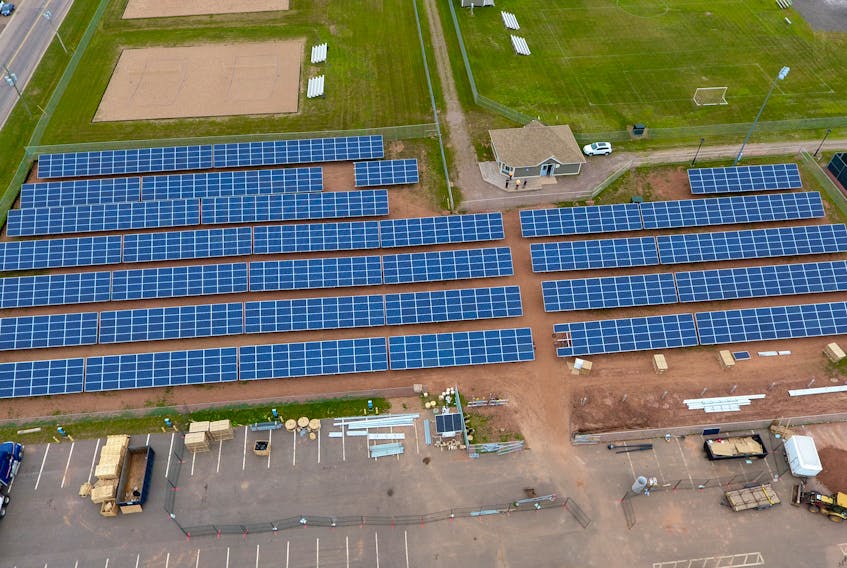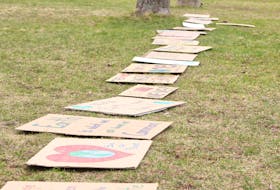Although Canada’s share of global annual greenhouse gas emissions is a mere two per cent, it ranks near the top amongst developed nations, on a per-capita basis. However, Canada is in a favoured position, compared to its peers, in making the transition to clean and renewable energy. Sixty one per cent of the electrical power generated nation-wide comes from relatively clean and renewable hydro. Only China and Brazil produce more. (National Resources Canada). When comparing provinces, four (British Columbia, Manitoba, Quebec and Newfoundland) stand out, producing approximately 95 per cent of their electrical power from hydro. On the downside, Alberta, Saskatchewan, Ontario, Nova Scotia, New Brunswick and indirectly, P.E.I., generate a modest amount of their power from clean and renewable sources.
Electricity generation in the Maritimes demonstrates the connection between available resources and power production. In Nova Scotia, coal accounts for 63 per cent of the electricity generated, which together with the use of natural gas and petroleum, increases the dependence on fossil fuels to 76 per cent. New Brunswick draws on a variety of fuel sources including nuclear (39 per cent), hydro (21 per cent), coal (18 per cent), natural gas (12 per cent), wind (7 per cent), and biomass/geothermal (3 per cent). This means that P.E.I., which currently imports 60 per cent of its electrical power from New Brunswick, has a similar source profile. Within the province of P.E.I., 98 per cent of the electricity generated comes from wind turbines. The eight Island wind farms produce over 200 megawatts of electricity, and a new proposed wind farm will add another 30 megawatts once it is installed. In addition, a new wind and solar system planned for Summerside will provide a further 21 megawatts. Even with these additions, about half of P.E.I.’s electrical needs will still have to be met by cable from New Brunswick.
The interest in producing clean and renewable energy is growing quickly in Canada and around the world. However, the terms clean and renewable need examination. All forms of electricity generation produce some unwanted green house gas emissions, but some are much more pristine than others. Solar and wind are the greenest, cleanest, and most renewable, since the sun or wind is the source. Hydro power, once the infrastructure is in place, is also relatively clean and renewable. However, for large installations, like Churchill Falls, the destruction of habitat and methane released by decaying vegetation in the reservoir supplying the dam is of concern. For this reason, smaller “run-of-the river” hydro plants, which do not require large reservoirs, are becoming more popular.
There is a growing interest in some jurisdictions in increasing the use of nuclear energy by constructing small modular reactors. According to Seamus O’Regan, minister of National Resources Canada, an action plan for their deployment will be rolled out this autumn. While in operation, they produce clean, but not necessarily renewable energy, since they are dependent on the mining of uranium, which produces greenhouse gas emissions, and will be depleted over time. As all Canadians know, the safety of nuclear reactors is uncertain. The meltdown of the reactor at Fukushima, Japan is a fresh reminder of this danger. As well, in Canada, we still do not have a safe way of storing the radioactive waste that results from the nuclear reaction.
Unfortunately, solar represents just over 2 per cent of electrical energy produced in Canada. Although a minor player, interest is beginning to build. It is rather ironic that Alberta and Saskatchewan, which produce most of their electricity from fossil fuels, have the greatest potential for solar development.
Compared to other provinces, P.E.I. has fewer options in meeting its electricity needs. It appears that Steven Myers, P.E.I.’s current minister of Transportation, Infrastructure and Energy, is encouraging local, or community-based power production, that would decrease reliance on fossil fuels. In this regard, Summerside, which is a bright light in local clean and renewable energy production, could serve as a template for future developments. A 12-megawatt wind farm currently meets 25 per cent of Summerside’s energy needs, and a new solar farm and storage unit, which were announced in January, will add another 21 megawatts.
As Canada makes the transition to a greener economy, more electricity will be needed. Fortunately, most provinces have the capacity to meet future demands without relying on fossil fuels. If Canada wishes to meet its climate targets, clean energy projects will have to be supported by municipal, provincial and federal levels of government. On a regional basis, it is imperative that the Maritime provinces work together to generate a strategy to develop clean energy without the use of coal, other fossil fuels, or nuclear power. Arrangements with Quebec Hydro, Newfoundland Power, and Newfoundland and Labrador Hydro could hold the key.
Dr. Edgar MacDonald, a retired senior, lives in Winsloe.









